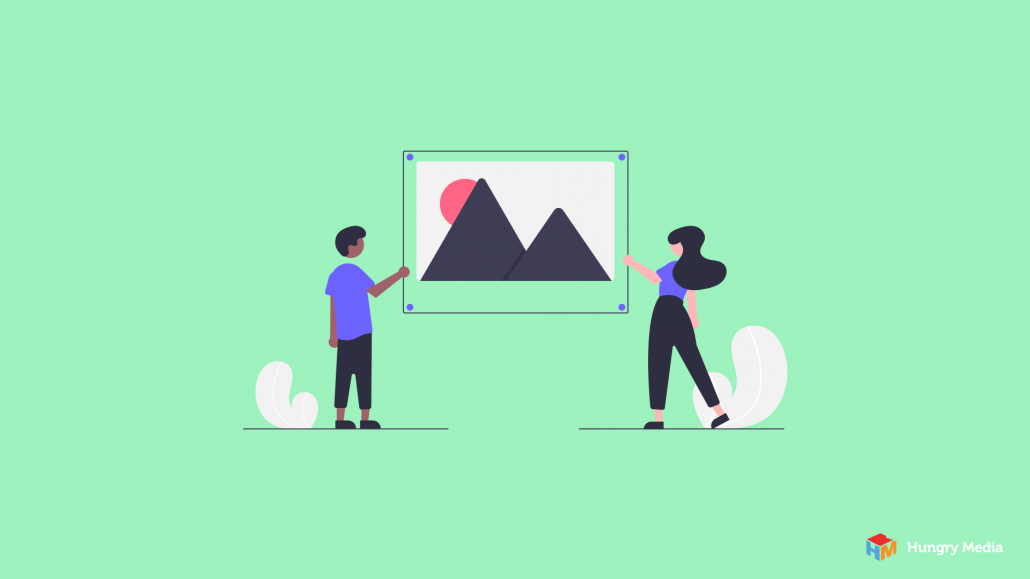
Ever wonder why images are important on a website? Studies show that users make a judgement about the quality of a website within seconds of viewing it. So, whether you manage a blog with 100 weekly visitors or a multimillion-dollar ecommerce site, you want it to look amazing.
As every one of us is a consumer in our own way, it’s easy to accept that images play a role in helping us decide what we like and what we don’t. But it’s not just about gut feeling. There is plenty of data explaining why images are important in websites, too.
- Nearly 65% of the population are visual learners.
- Users only read about 28% of the words on any given page.
- Humans remember 80% of what they see, versus just 20% of what they read.
- Those who use visual communication to persuade are 43% more successful than those who rely solely on words.
- The brain can identify images seen for as little as 13 milliseconds, indicating that vision helps us quickly identify concepts and determine where, exactly, we should focus our attention when several options are present.
In short – images are a powerful, effective method of communication.
Why are Images Important on a Website?
The importance of images on websites isn’t just about how our brains process them. There are several additional benefits to using graphics in web design.
Visual Content is Shared
Social media users share visual content more often than content without images. In fact, 63% of social media content is visual, and nearly half of all internet users have reposted a photo or video seen online. By using content images, you increase the likelihood of connecting with and attracting new users to your website.
Visuals Improve User Experiencwe
Because the meaning of images is so much easier to comprehend and their information so much easier to retain, the use of images in websites has a positive impact on user experience.
Images Make Your Website More Searchable
Appropriately naming and captioning your web graphics, in addition to using search-friendly metadata, will make it easier for search engines to index your site, improving your on-page SEO. Furthermore, Google images searches account for up to 27% of U.S. web searches; therefore, the use of quality images increases the chance of a searcher landing on your website.
Images Trigger Emotion
Images can trigger memories and imagination, both of which impact emotion and connection. Seeing the right image at the right time can convince us to make decisions we wouldn’t have made otherwise.
Websites with Graphics Get More Views
It’s true. Websites with images get almost double the views than websites without. That should sell you right there!
How to Make the Most of Images on Your Website
Not all web page graphics are created equal. There are a few steps you’ll have to take to get the most out of graphics and pictures on your website.
Be Intentional with Your Graphics & Images
Don’t let the fact that images rule make you throw web page graphics around for the sake of it. You should always have a good reason for using a particular image in a particular way.
Name Image Files Well
Image file names are part of your web design. Pictures with descriptive file names will help Google determine whether they are relevant to the search being conducted.
Use Alt Attributes
Alternative attributes, or alt tags, describe the photo for those who are unable to see it. They have the added benefit of telling search engines what it’s all about, too. When creating alt tags be sure to use natural language. Bonus points if the tag uses one of your targeted SEO keywords.
Use Captions
Image captions are read up to 300% more often than body copy. That said, it’s beneficial to caption each image you use.
Use the Right File Type
There are several file types that can be used on your website. The rule of thumb is that photographs should be saved as JPEG files, and logos or graphics should be saved as PNG files. For more details about image file types, check out our post about the types of web graphics and when to use each.
Maintain Consistency
One of the most common website design mistakes is the use of conflicting visuals. Consistency among the type, location, and size of website design images will go a long way to create a cohesive site with a professional appearance.
Get the Most Out of Your Images with Hungry Media
Now that you know why images are important on a website, it’s time to make them work for you. If you’ve got questions about how to make the most of your images – whether on that starter blog or major ecommerce site – Hungry Media can help. We’ve got years of experience in creating websites from scratch and giving current sites a boost. Want to build an app? We can help with that, too. Contact us today to get started. We can’t wait to hear from you!
contributed by Melissa Lucas, senior staff writer



